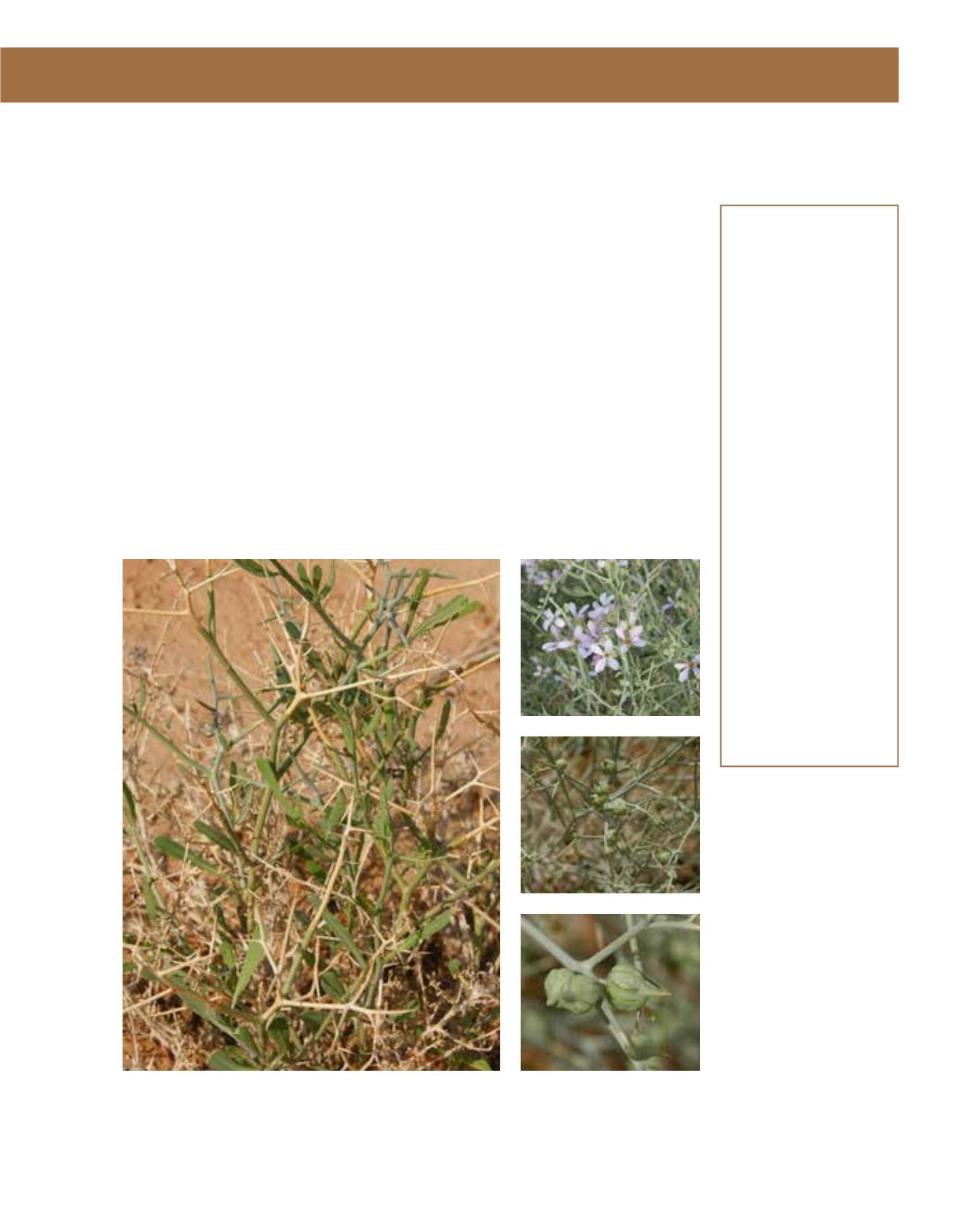

GENERAL
Origin
:
arid
Vigour
:
normal growth
rate
Humidity
:
extremely arid,
very arid, semi-
arid
Propagation :
direct sowing,
sowing and
pricking out
Maintenance :
low
CONDITIONS
Urban climate :
resistant
Dessication :
resistant
Stagnant water :
vulnerable
Irrigation
:
none
Salinity/ppm :
very high (7000
ppm)
Hardiness
:
-6°C
SHAPE
Type
:
shrub
Height
:
0.6 m
Spread
:
2 m
Foliage
:
deciduous
FLOWER
Colour
:
pale blue, pale
violet
Size
:
1 cm
Period
:
February -
November
FRUIT
Type of fruit :
capsule
Fruit size
:
0.5 cm
Zilla spinosa is called silla or shubrom in Arabic. It is found in the Sahara-Arabian deserts in
northern Africa, in the Middle East and on the northern to central Arabian peninsula. Z. spinosa
is a shrub originating from arid regions which is well adapted to desert climates, and grows to
a height of 60 cm. It is nearly leafless, thorny and dense-growing, mostly round in shape like a
dwarf shrub. It has pale-blue to pale-violet flowers which appear in winter and spring, after which
5-mm seedpods develop. Propagation is by seed, or self-seeding. The branches and small leaves
are olive-green.
Zilla spinosa
is tap-rooted, and grows in sandy, silty or rocky deserts. The shrub
is highly salt-tolerant. In Arriyadh and the surrounding areas, shubrom can be found very often,
e.g. in Thumamah Park. It can provide appealing design compositions with its light and shiny ap-
pearance and attractive, delicate blooms. In landscape design, it can be used as a groundcover, or
for grouped or massed planting. In open country, it can be recommended as a coloniser, as a bank
or slope stabiliser, and for environmental consolidation. In projects such as the rehabilitation of
natural plant cover, it will be effective in seed mixtures for initial planting measures. Because of
its pleasing appearance, it should also be considered for urban landscape design, such as for road
verge planting. Irrigation will improve growth and flowering.
318
Zilla spinosa,
Brassicaceae
Zilla,
silla, shubrom
















